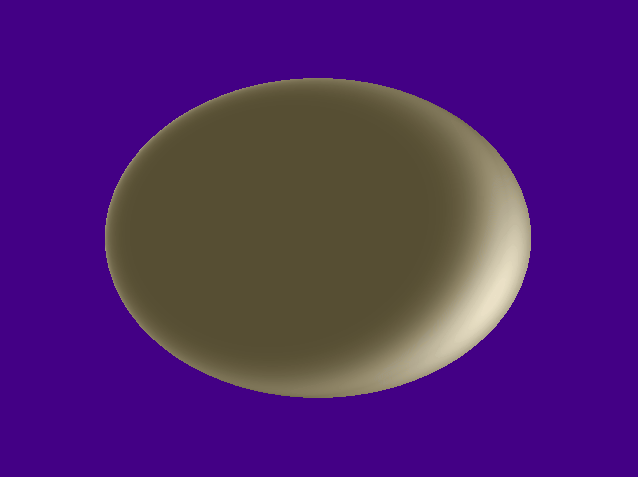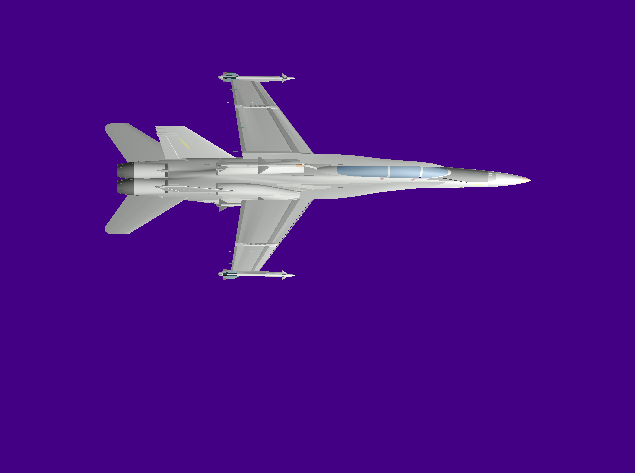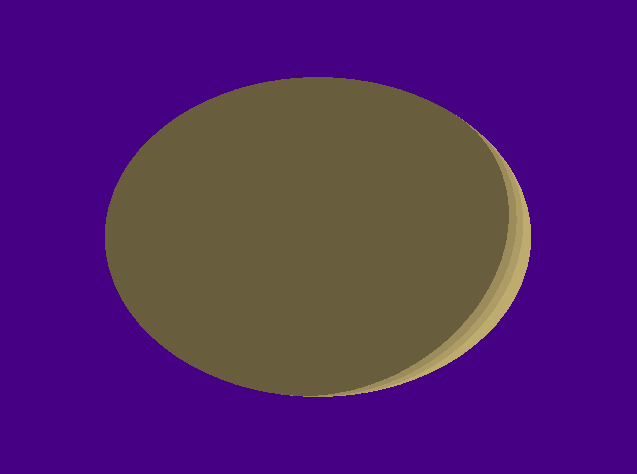|
Fragment Shaders
In "Modern" OpenGL |
|
Prof. David Bernstein |
| Computer Science Department |
| bernstdh@jmu.edu |
|
Fragment Shaders
In "Modern" OpenGL |
|
Prof. David Bernstein |
| Computer Science Department |
| bernstdh@jmu.edu |
in vec4 gl_FragCoord:
in bool gl_frontFacing:
TRUE if this fragment was generated by the
front face of the primitivein vec2 gl_PointCoord:
glGetUniformLocation() to get a handle/name/IDglUniform____() to initializeuniform type
identifier;
layout(location=index) out type
identifier
statement (Note: 0 is the default index if the layout()
clause is omitted.)void glBindFragDataLocation(GLuint programID, GLuint colorNumber, const char* name);
#version 300 es
/**
* A fragment shader that passes the color red
* on to the next stage in the pipeline.
*
* @author Prof. David Bernstein, James Madison University
*/
precision mediump float;
/**
* Outputs.
*/
layout(location = 0) out vec3 color;
/**
* Process the inputs and generate the outputs.
* In this case, pass red on to the next stage.
*/
void main(){
color = vec3(1.0f, 0.0f, 0.0f);
}
#version 300 es
/**
* A fragment shader that passes the (interpolated) color
* on to the next stage in the pipeline.
*
* @author Prof. David Bernstein, James Madison University
*/
precision mediump float;
/**
* Inputs that are different for each invocation of this shader.
*/
in vec3 fragmentColor;
/**
* Outputs.
*/
layout(location = 0) out vec3 color;
/**
* Process the inputs and generate the outputs.
* In this case, just pass the color on to the next stage.
*/
void main(){
color = fragmentColor;
}
#version 300 es
/**
* A fragment shader that implements a simple lighting model.
*
* For details, see the lecture on lighting at:
* https://w3.cs.jmu.edu/bernstdh/web/common/lectures/slides_lighting-3d.php
*
* @author Prof. David Bernstein, James Madison University
*/
precision mediump float;
/**
* Inputs that are different for each invocation of this shader
* (i.e., interpolated values from the vertex shaders).
*/
in vec3 vertexColor;
in vec3 position_worldspace;
in vec3 normal_cameraspace;
in vec3 eyeDirection_cameraspace;
in vec3 lightDirection_cameraspace;
/**
* Outputs.
*/
out vec3 I; // Total intensity of the light
/**
* Inputs that (may) stay constant for all vertices.
*/
uniform vec3 lightPosition_worldspace;
/**
* Process the inputs and generate the outputs.
* In this case, calculate the total light intensity
* for the fragment.
*/
void main(){
// Properties of the light
vec3 L = vec3(1.0, 1.0, 1.0) * 50.0f;
// Properties of the material
vec3 A = vertexColor;
// For diffuse reflection (per Lambert)
//
// Normalized normal of the fragment
vec3 n = normalize(normal_cameraspace);
// Normalized direction from the fragment to the light
vec3 l = normalize(lightDirection_cameraspace);
// Cosine of the angle between the normal and the light irection.
float cosTheta = clamp(dot(n, l), 0.0 , 1.0);
// For specular reflection (per Romney)
//
// Normalized direction from the fragment to the viewer
vec3 v = normalize(eyeDirection_cameraspace);
// (Normalized) Direction of the reflection
vec3 r = reflect(-l, n);
// Cosine of the angle between v and r
float cosPhi = clamp( dot(v, r), 0.0 , 1.0);
// For the complete model
//
// Distance to the light
float d = length( lightPosition_worldspace - position_worldspace );
// The attenuation factor
float beta = pow(d, 2.0);
// Parameters of the complete model
float kappa_A = 0.5;
float kappa_D = 0.5;
float kappa_S = 0.5;
float delta = 5.0;
// The complete model
I = A * kappa_A + (L / beta) * ((kappa_D * cosTheta) + (kappa_S * pow(cosPhi, delta)));
}
A Fragment Shader that Implements a Simple Lighting Model


#version 300 es
/**
* A fragment shader that implements a simple lighting model.
*
* For details, see the lecture on lighting at:
* https://w3.cs.jmu.edu/bernstdh/web/common/lectures/slides_lighting-3d.php
*
* @author Prof. David Bernstein, James Madison University
*/
precision mediump float;
/**
* Inputs that are different for each invocation of this shader
* (i.e., interpolated values from the vertex shaders).
*/
in vec3 vertexColor;
in vec3 position_worldspace;
in vec3 normal_cameraspace;
in vec3 eyeDirection_cameraspace;
in vec3 lightDirection_cameraspace;
/**
* Outputs.
*/
out vec3 I; // Total intensity of the light
/**
* Inputs that (may) stay constant for all vertices.
*/
uniform vec3 lightPosition_worldspace;
/**
* Process the inputs and generate the outputs.
* In this case, calculate the total light intensity
* for the fragment.
*/
void main(){
// Properties of the light
vec3 L = vec3(1.0, 1.0, 1.0) * 50.0f;
// Properties of the material
vec3 A = vertexColor;
// Normalized normal of the fragment
vec3 n = normalize(normal_cameraspace);
// Normalized direction from the fragment to the light
vec3 l = normalize(lightDirection_cameraspace);
// Cosine of the angle between the normal and the light irection.
float cosTheta = clamp(dot(n, l), 0.0 , 1.0);
if (cosTheta > 0.20) I = vertexColor * vec3(1.1, 1.1, 1.1);
else if (cosTheta > 0.10) I = vertexColor;
else if (cosTheta > 0.01) I = vertexColor * vec3(0.9, 0.9, 0.9);
else I = vertexColor * vec3(0.6, 0.6, 0.6);
}
A Fragment Shader that Implements a Cartoon Lighting Model
